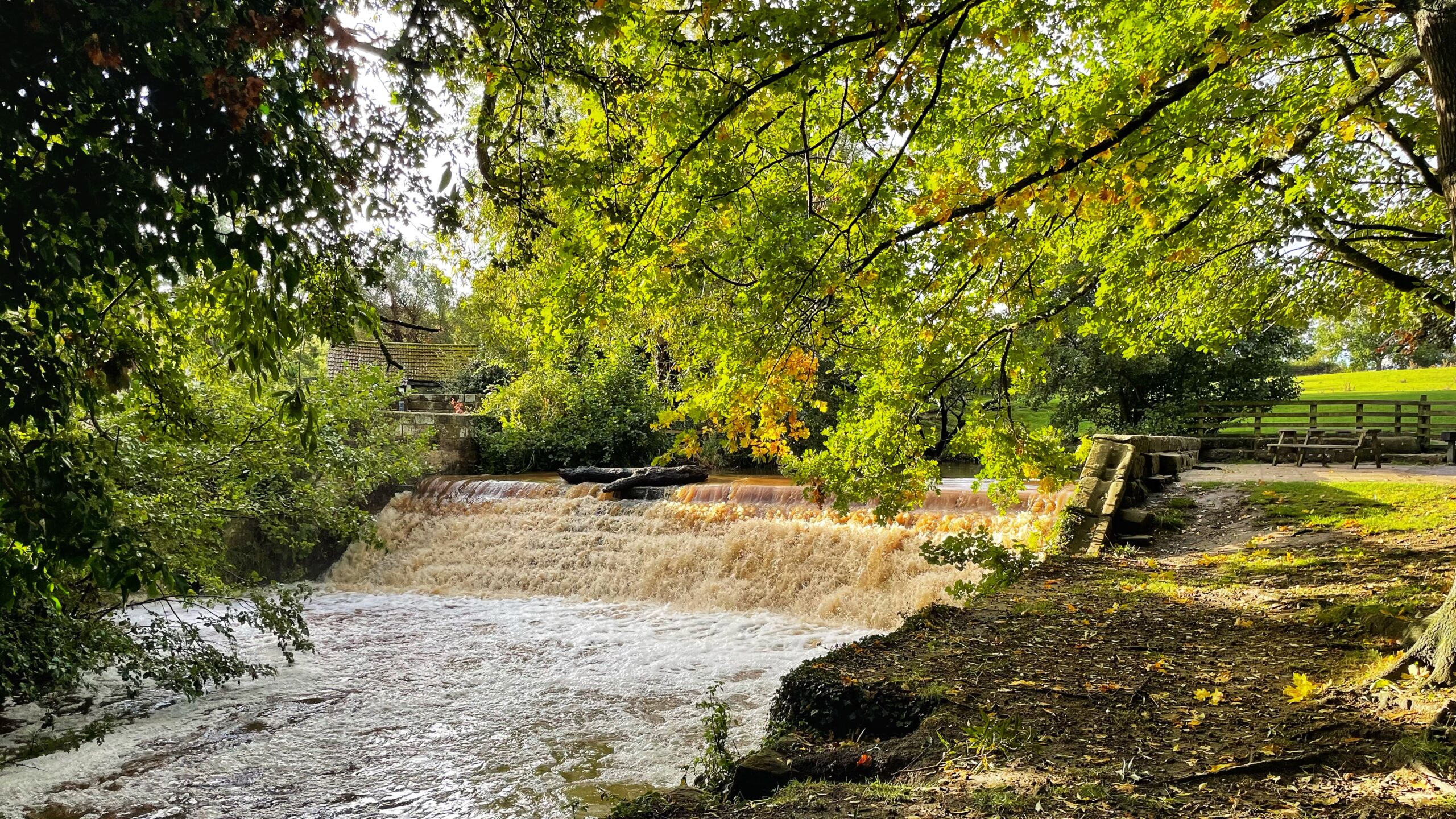A flood warning late last night prompted me to wander down the village this morning and along the river. The so-called “waterfall” was in full spate, though hardly dramatic enough to warrant excitement.
It is not a waterfall at all, of course, but a weir built in 1840 thanks to local benefactor Thomas Richardson. Its medieval predecessor had been swept away in a violent summer flood, when the bursting of fish ponds at Kildale sent a two-metre wave crashing through the village1Information Board at Waterfall Park. 27 August 2024..
The river once powered three mills. The earliest, a corn mill by Low Green, gave way to progress. An oil mill on Station Road became part of Ayton School before being reborn as apartments in 1997. The beech trees planted at the foot of the road once provided wood for the heavy stampers that crushed seeds inside the mill.
A second oil mill, East Mill, between Yarm Lane and Stokesley Road, now survives as a private house. Both it and the corn mill drew their power from water diverted above the weir in what is now Waterfall Park. The mill race ran across Easby Lane and alongside Race Terrace before rejoining the river. The tail race from the Corn Mill threaded under the “Guinea Pig Inn” and the Stokesley Road before driving East Mill.
With so much water channelled away, and with village sewage discharging into the river, the result was predictable: a foul smell in summer. To keep matters tolerable, the sluice gate was closed on Sundays, forcing the river to wash itself clean through the village.
- 1Information Board at Waterfall Park. 27 August 2024.

Leave a Reply